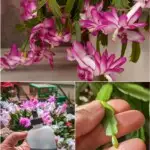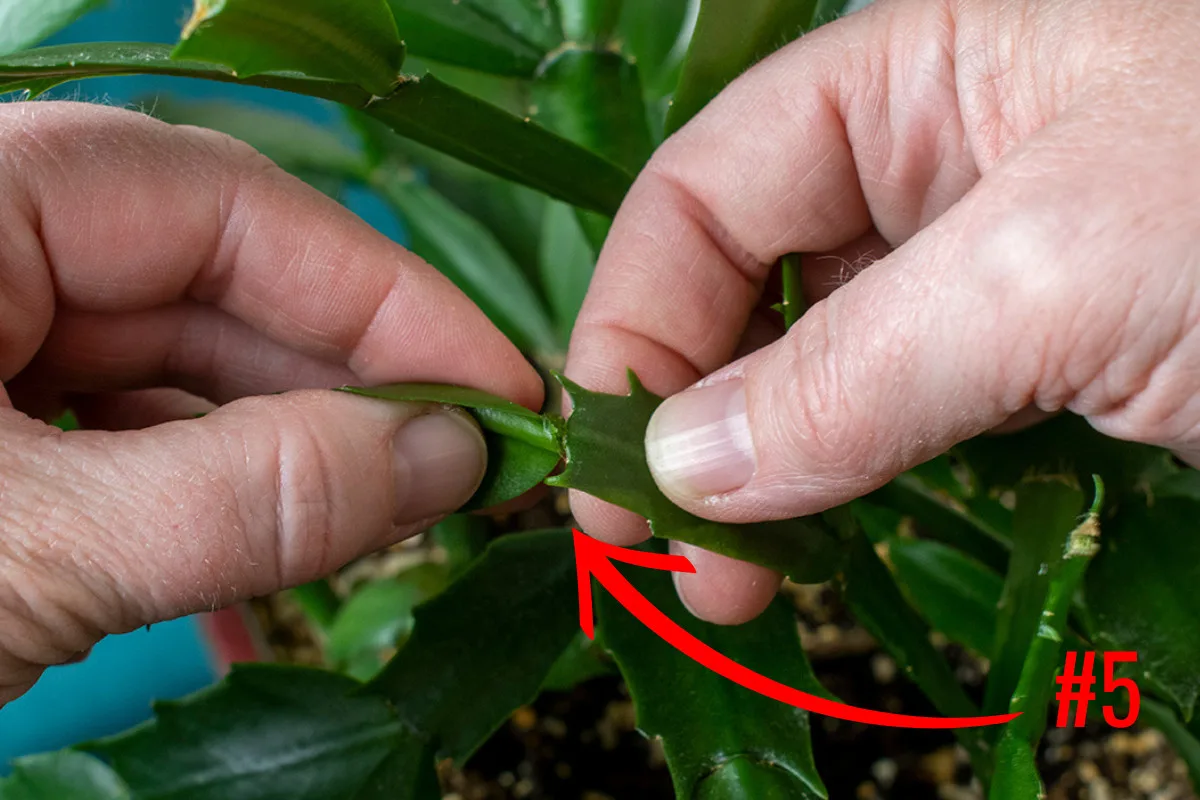
The most important thing you can do to get your Christmas cactus (Schlumbergera) to bloom each year is to ensure it goes through a proper dormant phase with shorter days and cooler nights.
I talk about that more in my guide for caring for your Christmas cactus here.
However, closely behind that in importance is making sure your Christmas cactus has the right nutrients available. That means fertilizing at the right time and with the right fertilizer.
But with so many different fertilizers on the market, which one do you use?
(Spoiler Alert: This is the one I use – it’s so inexpensive and just seven drops is all you need. But don’t follow the directions on the bottle, I’ll explain how and when to actually use this fertilizer below. Keep reading.)
A good rule of thumb for fertilizing houseplants is to choose a balanced NPK fertilizer in a 1:1:1 ratio. For chemical fertilizers, you should also dilute them and use them at half-strength.
Of course, anyone who owns a Christmas or other holiday cactus can tell you these aren’t your average houseplants. Far too often, frustrated Christmas cactus owners find that their basic houseplant fertilizer isn’t cutting it.
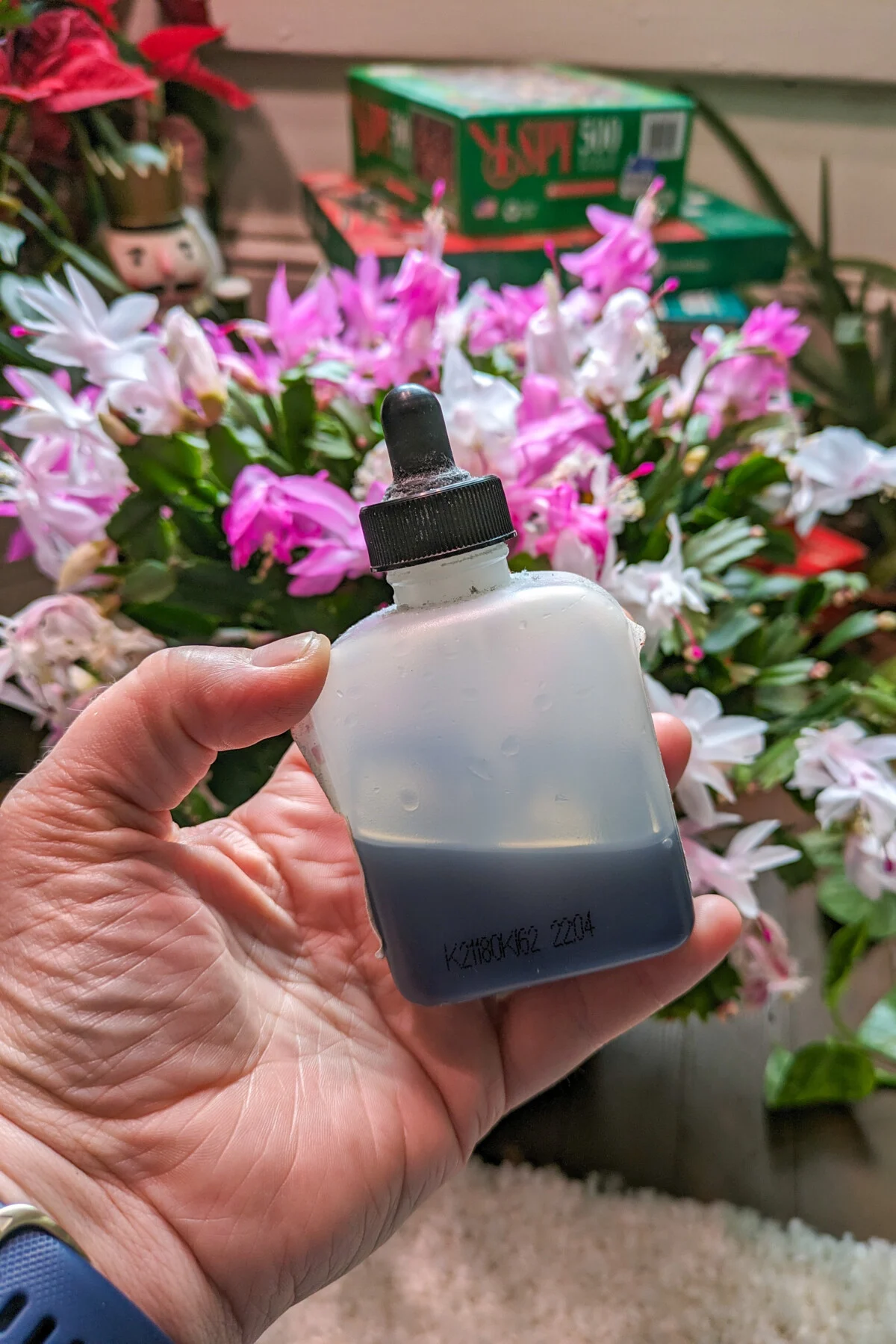
Lucky for you, I’ve found the perfect fertilizer for Christmas cactuses.
After years of trying different fertilizers formulated for houseplants, mostly choosing what happened to be in stock at the garden center each time I ran out, I stumbled across a great fertilizing solution for my Christmas cactus quite by accident. I have my obsession with African violets to thank for it.
What Do African Violets Have to Do With Fertilizing Your Christmas Cactus?
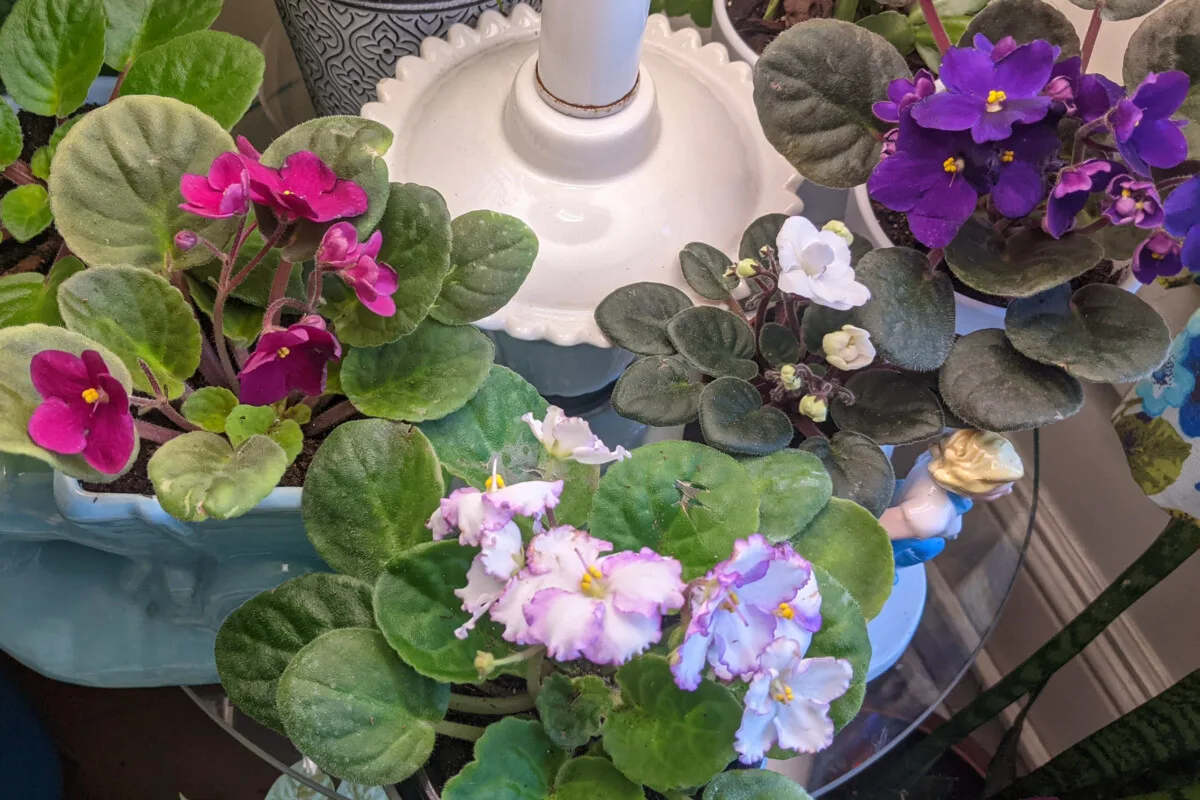
I grew up in a house that had lots of “grandma” houseplants, not the plants that are so popular today, such as monstera or pothos. We had Christmas cactuses and African violets — all the plants everyone’s grandmother grew.
Naturally, I have an affinity for both of these plants, but over the years, I have acquired quite a collection of African violets. I got pretty good at getting them to bloom continuously.
Part of that is using Schultz African Violet liquid plant food to feed my violets. Seven drops in a quart of water, and you’re good to go.
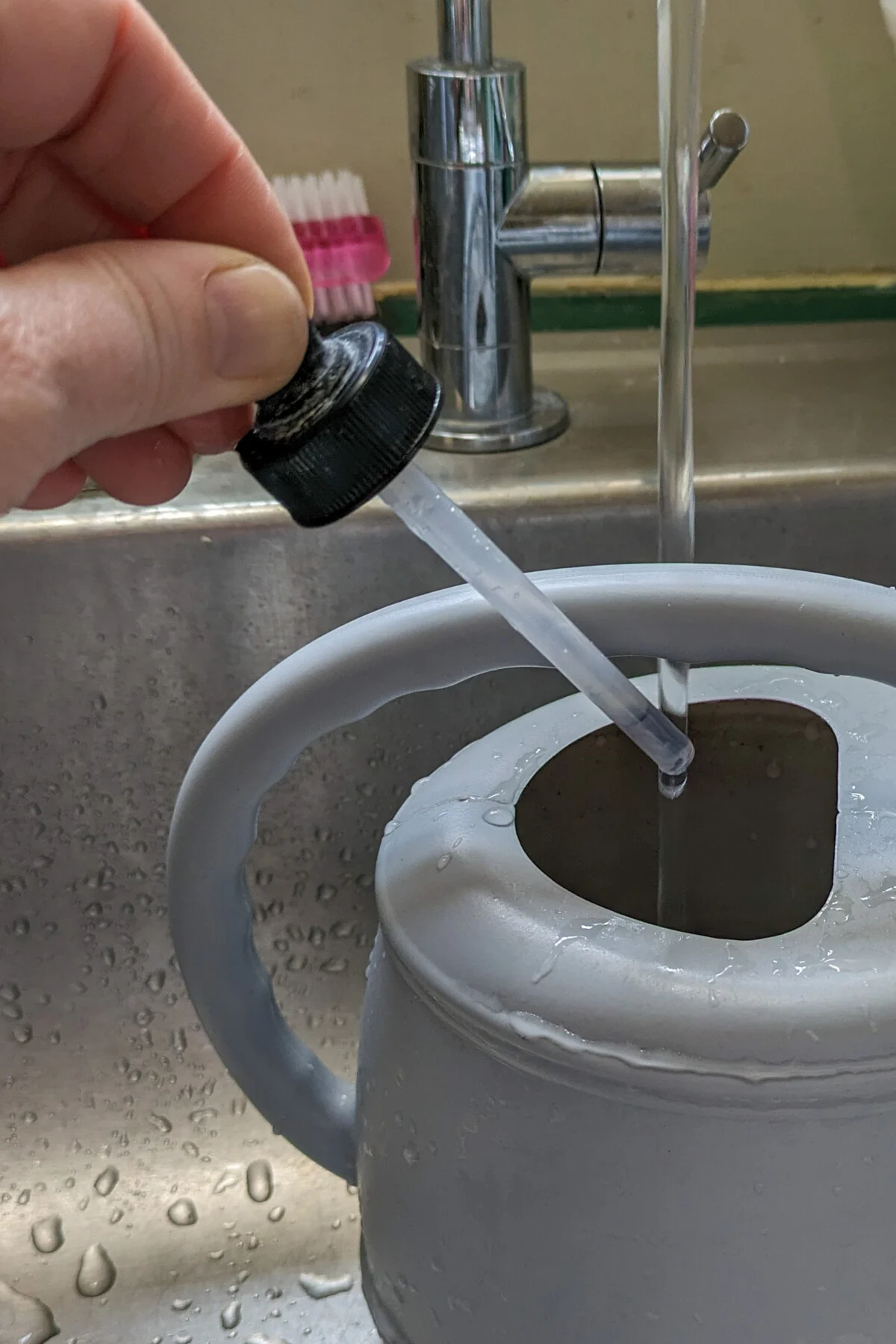
I remember it’s what my Papa Link used when I was growing up, and it works. Beautifully.
So, I decided to try using it on my holiday cactus a couple of years ago and see what happened.
I had the most prolific blooms on my cactus that I’ve ever had; that’s what happened.
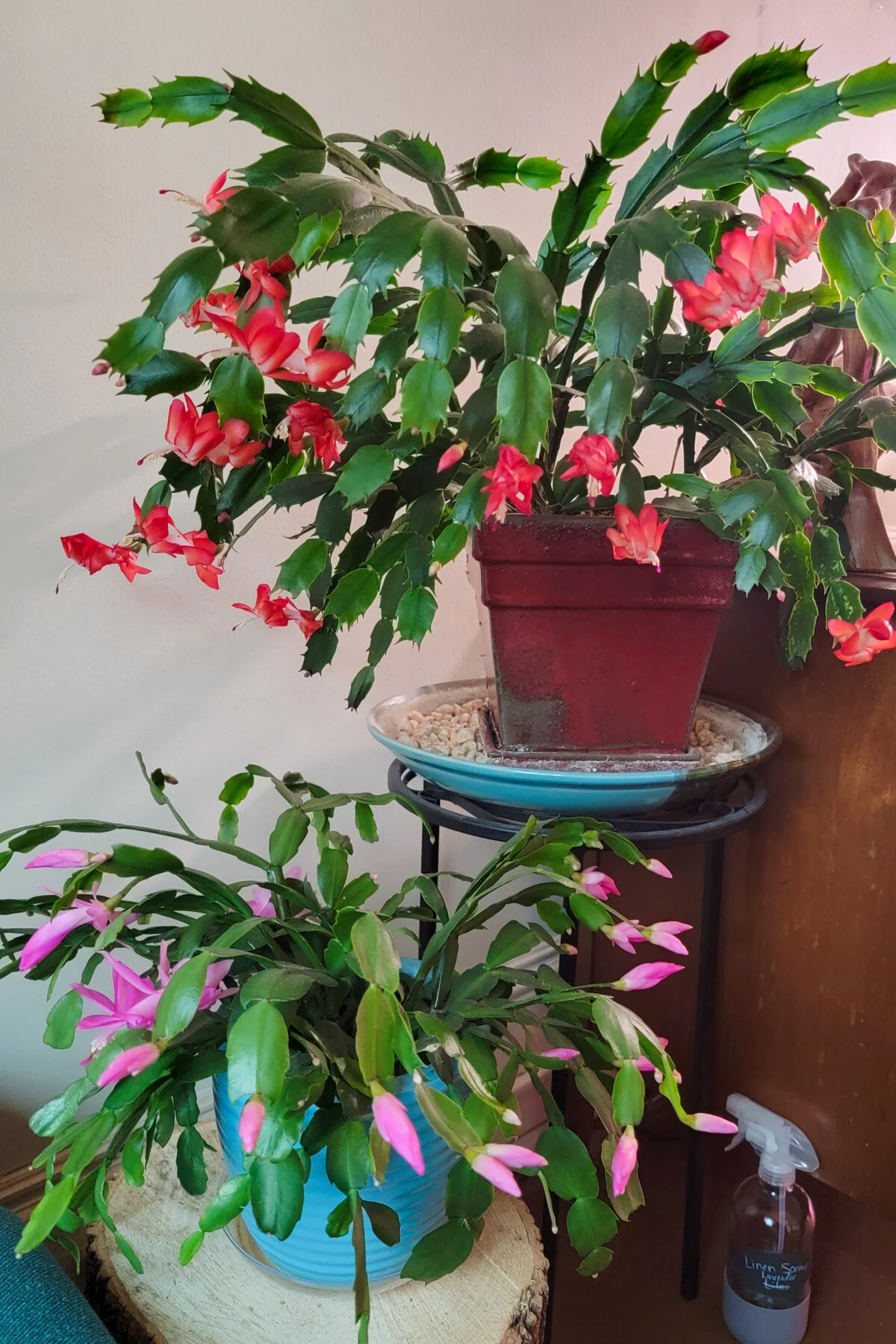
From that point on, it became my go-to fertilizer for blooming houseplants. So far, it’s never let me down. Now that you know my secret, let’s take a look at why it works so well and when and how to fertilize with it.
Why It Works So Well – It’s the ‘P’
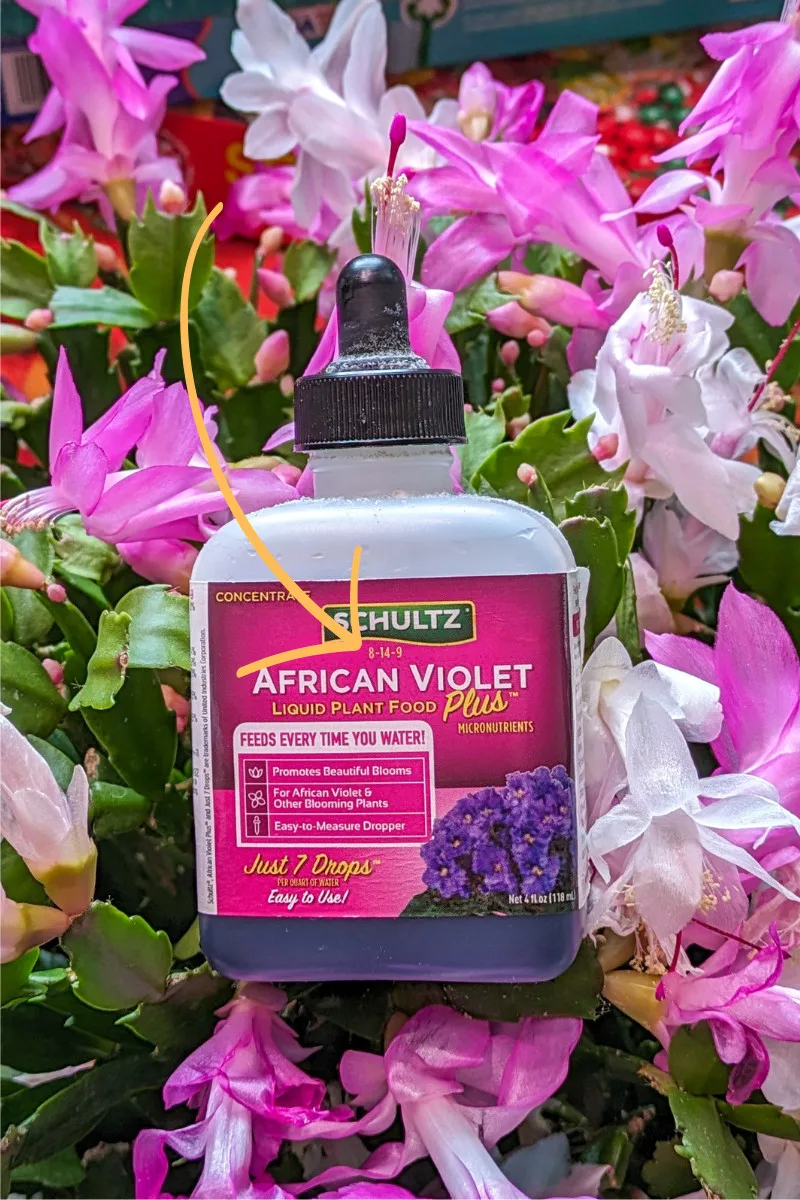
When it comes to fertilizer, it’s all about the NPK, and Schultz African Violet liquid plant food has more phosphorus. Phosphorus is an incredibly important nutrient for flowering and fruit-bearing plants. It’s essential during the flowering phase of the plant’s life cycle.
It’s such an important nutrient for so many different processes: cell division and growth (which increase during the blooming phase), sturdy root growth, energy storage and transfer, and even respiration – all of these plant processes require phosphorus.
But too often, we get the timing wrong and fertilize our Christmas cactus long after it’s needed. If you start fertilizing when you see buds, you’ve already missed the boat. The flowering cycle starts long before you see the visible results.
When To Fertilize Your Christmas Cactus
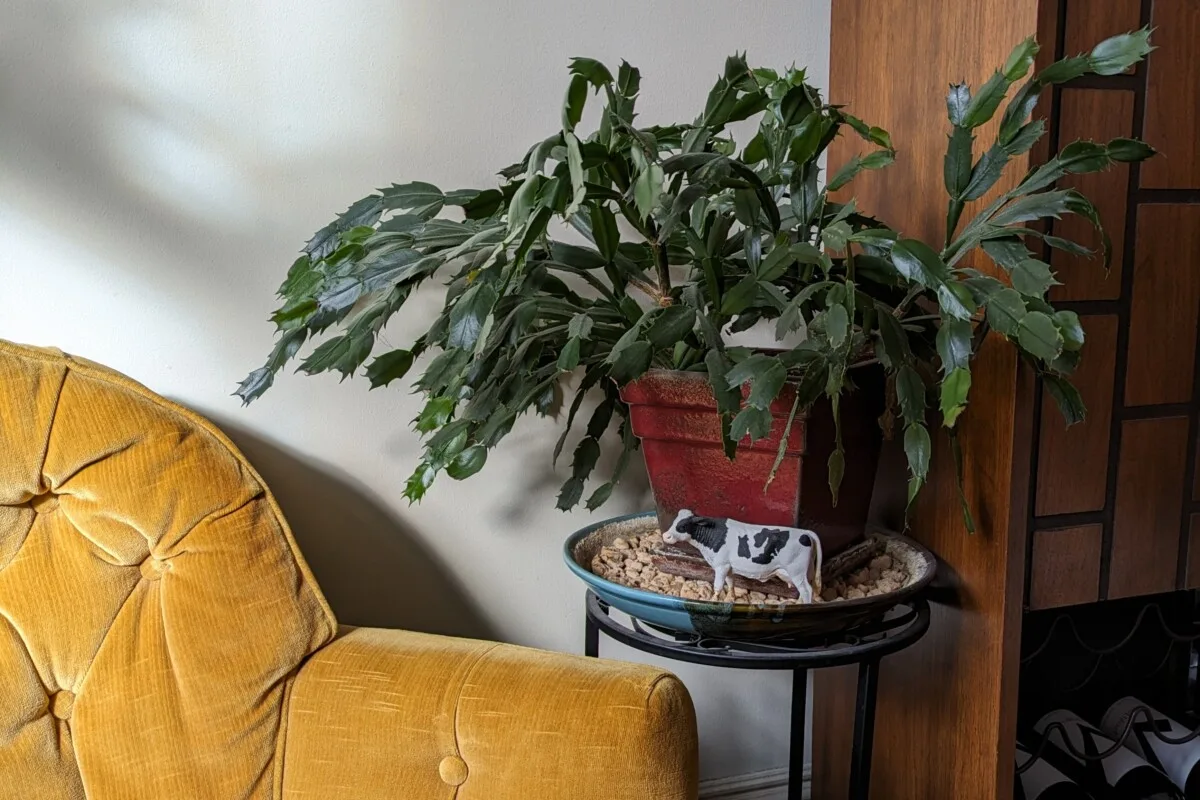
Once your Christmas cactus has bloomed, let it take a nice relaxing vacation throughout January. Simply water it and let it chill and do its own thing. Around February or March, as the days begin to grow longer again, you’ll notice the plant will start its annual growth period.
You’ll start to see tiny new segments, cladodes, growing at the tips of older segments and at the nodes where two segments join together.
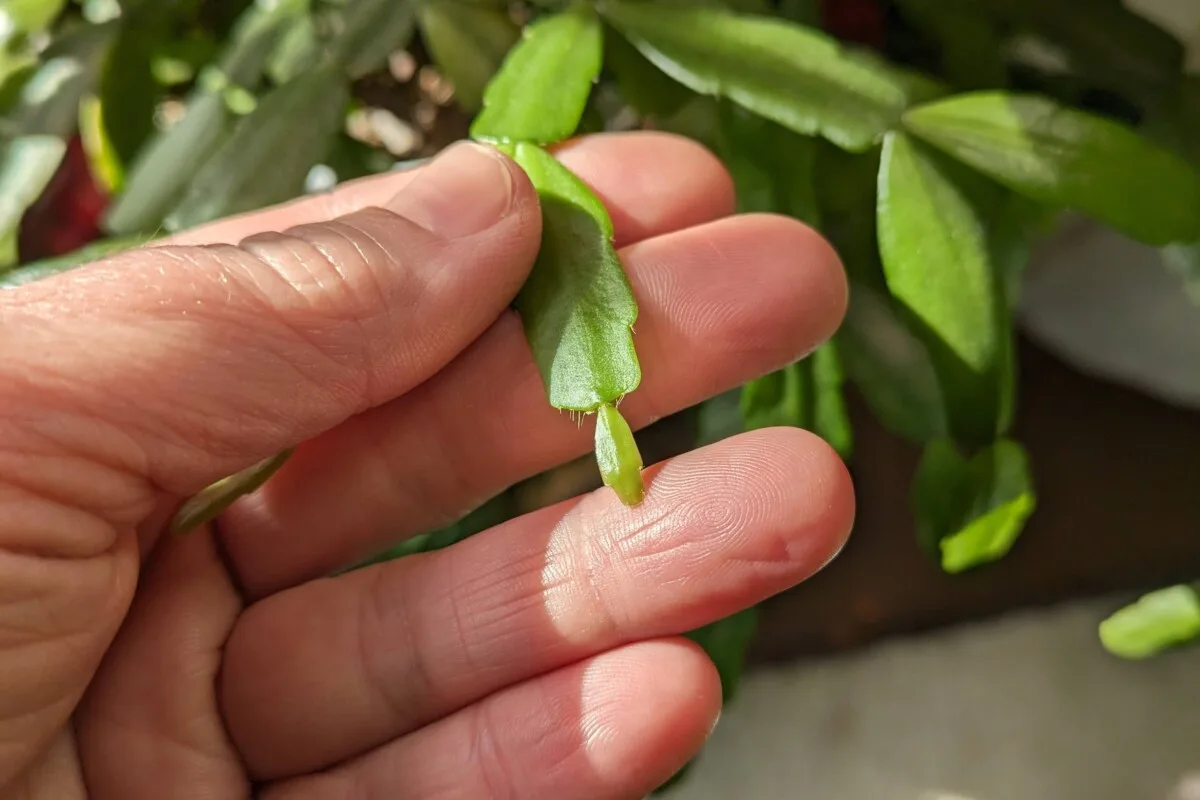
Now is the time to reach for the fertilizer.
Related Reading: How to Propagate Christmas Cactus + 2 Secrets To Big, Blooming Plants
Don’t Follow the Directions
If you’re going to use Schultz to feed your holiday cactus, I recommend not following the directions on the bottle. What can I say, I’m a rebel. I feed my plants a little differently than the directions say to. The directions on the package say to feed your plants with it each time you water. I choose to use it at the full seven-drop strength every other time I water.
Skipping a feeding each time I water prevents salt build-up in my plant’s soil. I’ve also found we, as houseplant owners, tend to over-fertilize our plants, which can be more damaging than not fertilizing at all.
Following this schedule, you’ll fertilize every 2-4 weeks throughout the active growing season.
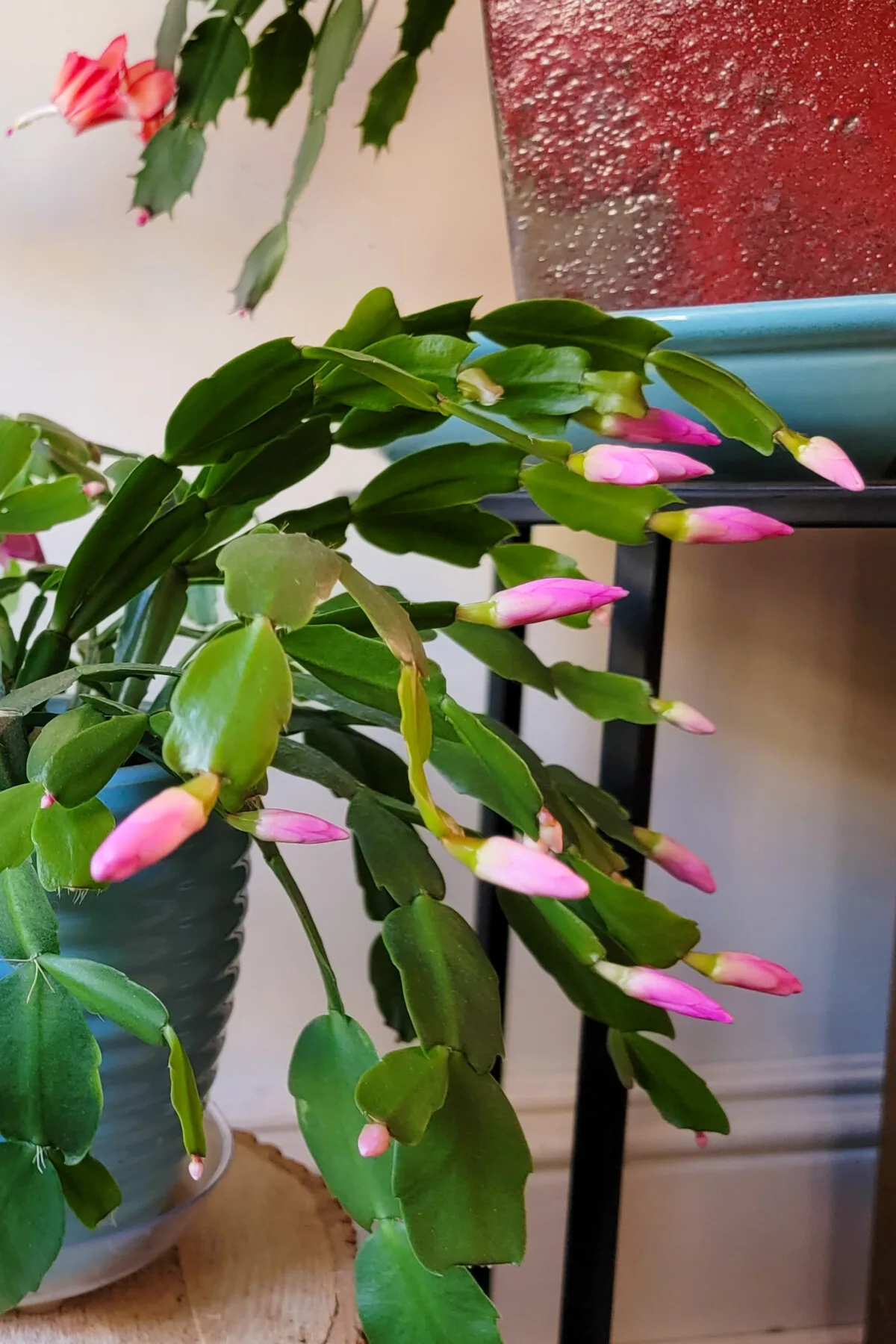
When to Stop Fertilizing Your Christmas Cactus
Reduce or stop fertilizing in late fall or early winter when the plant enters its dormancy period. During this time, the Christmas cactus benefits from a rest period of about six to eight weeks before it puts out buds.
The shorter days and cooler nights mimic the conditions the plant would experience in the wild, which trigger bud formation. Many people find it easiest to put their Christmas cactus in a room of their home that receives less daylight and is cooler than the rest of the house.
During this time, you’ll want to reduce how often you water the plant as well. Let it dry out between waterings. You may only need to water it once every three to four weeks during dormancy.
If you have a larger plant that can’t be moved without damaging the plant, purchase a black bed sheet to cover it within the afternoons to mimic the shorter days.
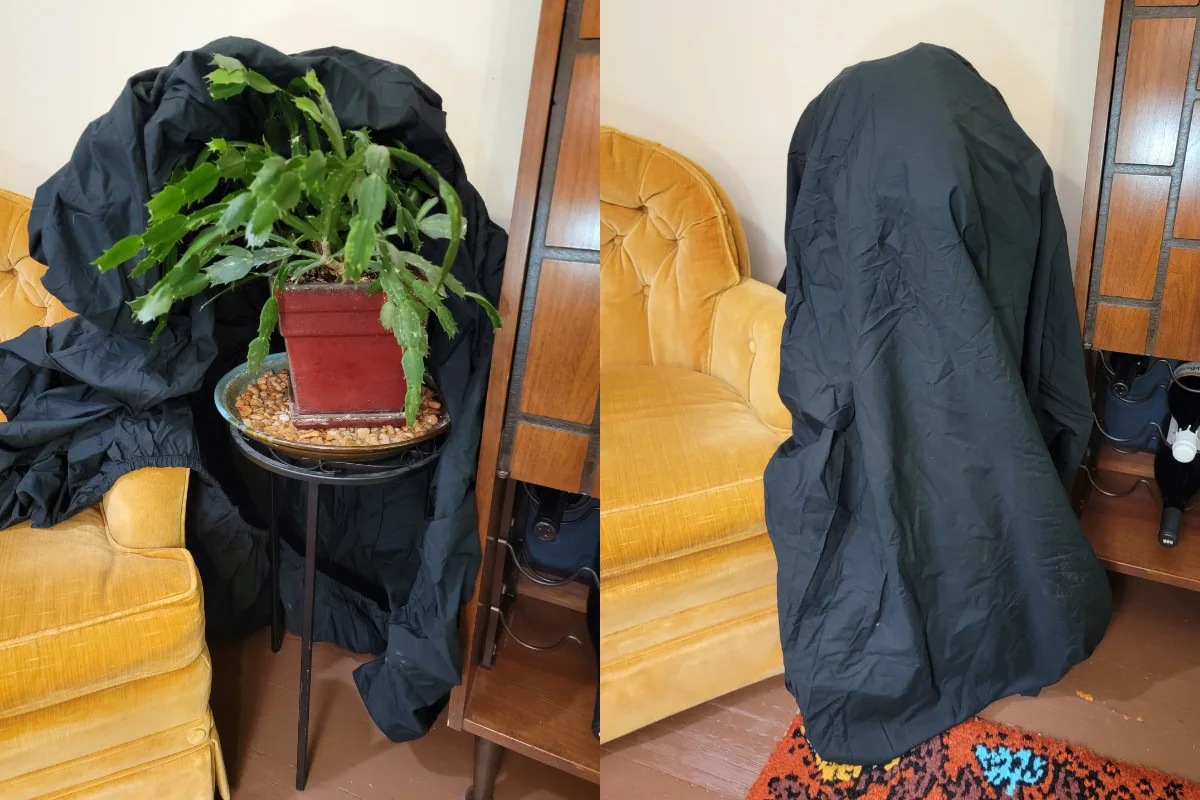
You can also close off heating vents near your plant if need be.
Remember, the key to successful flowering is the right fertilizer and the right environmental conditions.
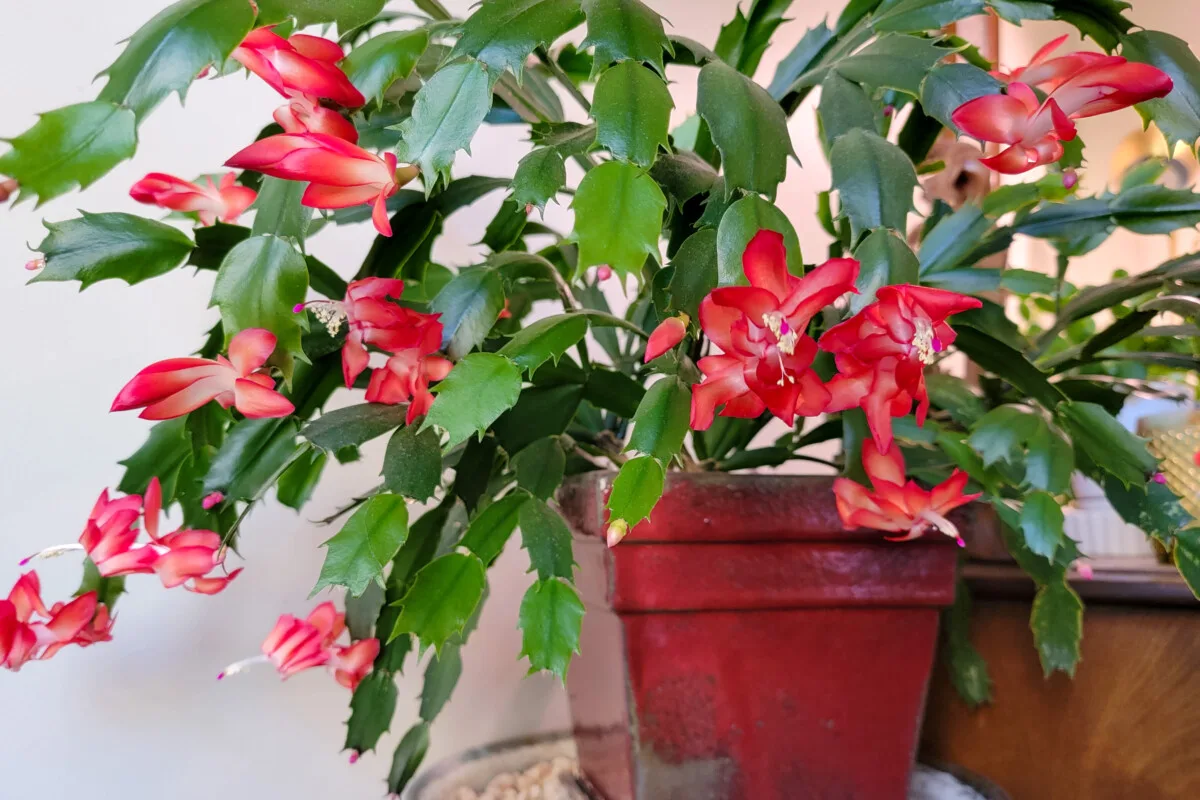
Once you get those two factors right, you’ll enjoy beautiful Christmas cactus blooms year after year. Grab yourself a bottle of Schultz African Violet liquid plant food and give it a try. Next Christmas could be your Schlumbergera’s best year yet!
Read Next:

Get the famous Rural Sprout newsletter delivered to your inbox.
Including Sunday musings from our editor, Tracey, as well as “What’s Up Wednesday” our roundup of what’s in season and new article updates and alerts.


